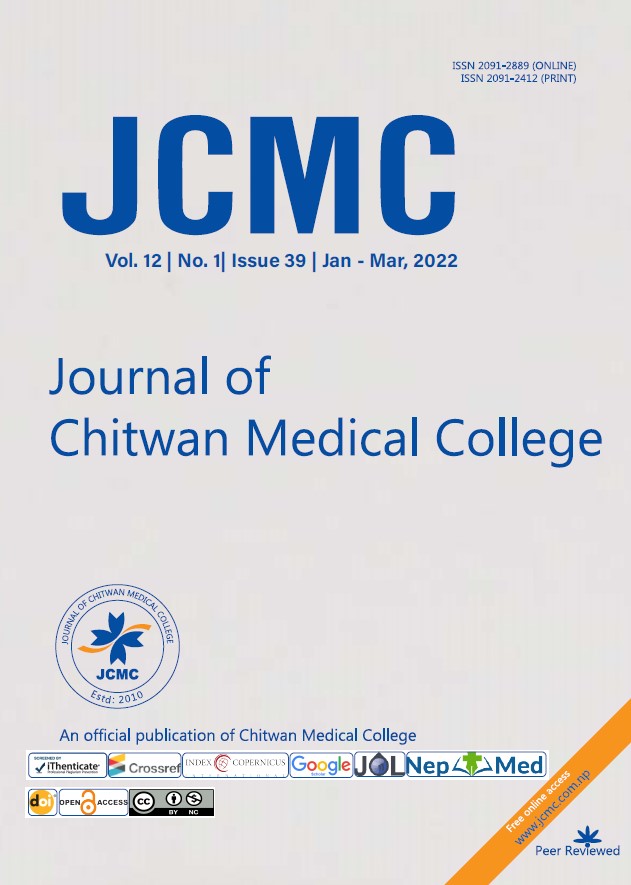Practice regarding dry eye syndrome among general population in central region of Nepal
Keywords:
Dry Eye Disease; Dry Eye Syndrome; Dysfunctional tear syndrome; Keratoconjunctivitis sicca; Ocular surface disease.Abstract
Background: Dry eye disease is a common disorder of the tear film due to decreased tear production, excessive tear evaporation, or abnormality in mucin or lipid components of the tear film associated with symptoms of ocular discomfort. Dry eye disease is a chronic, multifactorial disease, which is also called keratoconjunctivitis sicca. The aim of this study is to know about the practice concerning Dry Eye Disease and analyze the associated risk factors in Central Region of Nepal.
Methods: This was a cross-section hospital-based, observational study conducted in Chitwan Medical College and Teaching Hospital from 17 September 2021 to 16 December 2021.Cases enrolled over 3 months were administered in ocular surface disease. Proforma was designed and filled to evaluate the practice and risk factors of DED. SPSS version 26 was used to analyze the data entered in a specified proforma.
Results: During the pandemic period 300 patient participated in the study. Among the patient rolled in the study 217 (72.33%) had<10sec of TBUT and 83(27.67%) had> 10sec TBUT. 47(15.67%), normal Schirmer’s test, 148(49.33%) had mild and 78(26%) moderate, 27(9%) had severe dry eye. Most of the patient presented with dryness 119(39.8%), Foreign body sensation 97(32.3%), itching 52(17.3%) and Redness 22(7.3%).
Conclusions: Our results show most of the patients have mild to severe dry eye. Most of the patient presented with dryness, foreign body sensation, itching and Redness. VDG (TV and laptop) contact time of more than 2 hours were associated with increased odds of developing DED.
Downloads
Downloads
Published
How to Cite
Issue
Section
License
Copyright (c) 2022 Polina Dahal, Pradeep Bastola

This work is licensed under a Creative Commons Attribution 4.0 International License.




